originally posted at https://canmom.tumblr.com/post/669497...
Hiii friends! Today on Animation Night we’re once again visiting an obscure Japanese animator who last worked in the 1970s - haha no not this time, we’re doing Warner Bros, with a specific focus on the period of Chuck Jones.
Why Jones? Because I tried to go to his gallery recently here in LA, and I was gonna use photos from that trip to illustrate my post. Unfortunately, the Chuck Jones gallery currently look like this:

…as in completely stripped, allegedly to move to an adjacent building according to a blog post from 2019, but we couldn’t find it in between all the shops called shit like “Whimsical Charm”. What a mystery!
Nevertheless, a plan is a plan, so let’s take this opportunity to learn about animation ~in America~. The Chuck Jones Centre’s website seems more interested in hagiography than like, understanding any sort of history, so let’s try and put our own emphases…
Our story starts not with Chuck, but with Ub Iwerks. A contemporary of the Walter Dismey, Iwerks drew many of the earliest Disney animations, but soon left the company over a conflict about credit and overwork in the 30s:
The first few Mickey Mouse and Silly Symphonies cartoons were animated almost entirely by Iwerks, including Steamboat Willie, The Skeleton Dance and The Haunted House.[8] However, as Iwerks began to draw more and more cartoons on a daily basis, he chafed under Disney’s dictatorial rule.[12] Iwerks also felt he wasn’t getting the credit he deserved for drawing all of Disney’s successful cartoons.[13] Eventually, Iwerks and Disney had a falling out; their friendship and working partnership were severed in January 1930. According to an unconfirmed account, a child approached Disney and Iwerks at a party and asked for a picture of Mickey to be drawn on a napkin, to which Disney handed the pen and paper to Iwerks and stated, “Draw it.” Iwerks became furious and threw the pen and paper, storming out.
The Ub Iwerks Studio contracted to produce animated shorts for MGM to compete with Disney and Fleicher, but ultimately was not very successful. Still, animator Fred Kopietz put in a good word for his schoolmate at Chouinard, and Chuck Jones got his start in the animation industry, first as a cel washer (not exactly sure what this entails); there, he began gradually working his way up the ranks towards early parts of the animation process: cel painter in black and white and colour, then inking, then finally inbetweening.
After the Iwerks Studio folded(?), Chuck ended up at Leon Schlesinger’s studio, who did the animation for the massive film production/distribution company Warner Bros, then and now one of the “Big Five” major film studios.
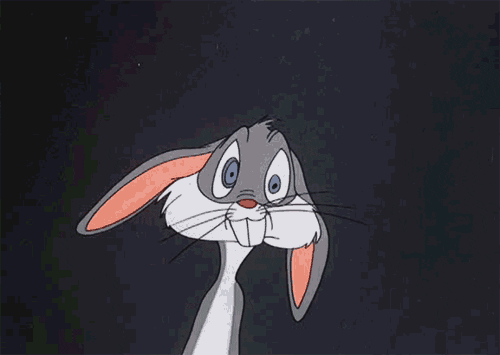
Shortly after Jones joined, he was promoted to the esteemed rank of “animator” and assigned to work with a new animation unit under Tex Avery. Schlesinger was artistically very hands off, but as a boss he was ruthless and miserly; the new unit’s dilapidated building became known as ‘Termite Terrace’; Jones, to his credit, did not put up with this for long and started efforts to unionise the animators:
He was actively involved in efforts to unionize the staff of Leon Schlesinger Studios. He was responsible for recruiting animators, layout men, and background people. Almost all animators joined, in reaction to salary cuts imposed by Leon Schlesinger. The Metro-Goldwyn-Mayer cartoon studio had already signed a union contract, encouraging their counterparts under Schlesinger.[10] In a meeting with his staff, Schlesinger talked for a few minutes, then turned over the meeting to his attorney. His insulting manner had a unifying effect on the staff. Jones gave a pep talk at the union headquarters. As negotiations broke down, the staff decided to go on strike. Schlesinger locked them out of the studio for a few days, before agreeing to sign the contract.[10]
I’m not sure exactly when this took place, but in 1938, Jones was promoted to supervisor/director, so I imagine it was around then.
In this period (30s to 40s), American animation was dominated by short comedic films centred around a cast of static characters, who would step into familiar roles, similar to the dynamics of the Commedia dell’Arte. The members of Termite Terrace (which became the metonym for the animation unit even after the building was demolished) gradually honed an ability to create such characters, almost all of them voiced by Mel Blanc, such as Porky Pig and Daffy Duck. In the 90s, Bob Bergen took over, and produced this very amusing demonstration of how to do the voice of Porky:
The most famous is of course trickster character Bugs Bunny, who went through a gradual evolution in both design and personality; the Jones Centre’s website attempts to summarise it as:
Bugs was originally created by Bob “Bugs” Hardaway, but developed by Tex Avery, Chuck Jones, Friz Freleng, Bob Clampett and Bob McKimson. Bugs’ first appearance was in 1940 in A Wild Hare by Tex Avery. However, because of Chuck Jones, Bugs evolved into the suave, sophisticated rabbit that we know and love.

But the question of “who created Bugs Bunny” has been contentious, in a way that’s infiltrated the cartoons themselves; c.f. The Bugs Bunny/Road Runner Movie directed by Jones:
Early on, Bugs discusses the wild villains he had co-starred with in his cartoons, which is followed by a tongue-in-cheek sequence depicting the history of comedy and a scene in which Bugs discusses his “several fathers”. The latter scene was written by Chuck Jones as a way to debunk fellow animation director Bob Clampett’s claims throughout the 1970s that he alone created Bugs, and Clampett’s name is notably missing from Bugs’ list, as a result of the conflict between Jones and Clampett.
Bugs gradually rose to become the star of the studio’s Looney Tunes (black and white) and Merrie Melodies (colour) films, with a growing supporting cast. Fitting the origin of American animation in vaudeville which carried on many unfortunate traditions from the minstrel era, many of them were, well you know. Questionable.
Another notable development in this period was The Dover Boys at Pimento University (1942), directed Jones, which was one of the first departures from Disney style full animation, and made the first major demonstration of smears.
Smear frames like these…
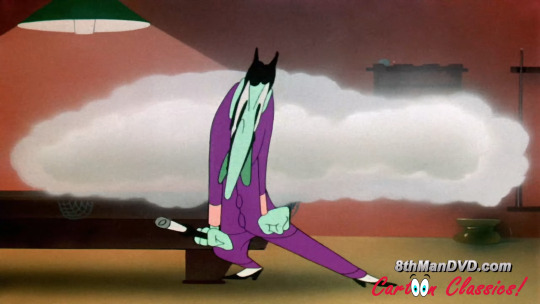

…gave the animation a distinctly modern, snappy feel, zipping from pose to pose, and the show has a fun surreal sense of humour. The development of smears would be incredibly influential in both America and Japan, but at the time it was received very poorly, and the only reason Jones wasn’t immediately fired was the World War II labour shortage:
According to Jones, Schlesinger and the Warner Bros. studio executives were less than pleased when they screened The Dover Boys because of the extensive use of limited animation and drybrush smears, and the executives went through the process of attempting to fire him despite the fact that the studio wanted him to abandon his Disney-like animation.[6][7] A replacement for Jones could not be easily found due to labor shortages stemming from World War II, so he was kept aboard.
The short received a new burst of popularity in recent times by virtue of being in the public domain, even prompting a major reanimation collab…
Elsewhere in animation, Disney animators were going on strike, prompting a major reckoning of how pay and credit would be handled in animation. The Leon Schlesinger studio meanwhile was sold to Warner Bros and renamed to Warner Bros Cartoons.
Not long after, the USA entered the second world war. As well as packing Bugs off to war, Jones started doing work for the US government to produce propaganda films for soldiers centring on a character called Private Snafu, working with Theodor Geisel (better known as children’s author Dr Seuss); here’s the first one which miraculously doesn’t contain any overt racism 🤪, and the rest.
He also took the opportunity to make a campaign film for Roosevelt in 1944, which sounds… unsubtle lmao.
Following the war, Jones continued working at Warner Bros Cartoons outside of a brief stint in 1953 where they closed the studio and he did some work on Sleeping Beauty. It was in this period he created his other enduring characters Wile E. Coyote and the Road Runner. During this time Jones created many of his most popular shorts:
In Jerry Beck’s The 50 Greatest Cartoons, a group of animated professionals ranked What’s Opera, Doc? (1957) as the greatest cartoon of all time, with ten of the entries being directed by Jones including Duck Amuck (1953), Duck Dodgers in the 24½th Century (1953), One Froggy Evening (1955), Rabbit of Seville (1950), and Rabbit Seasoning (1952).[2]
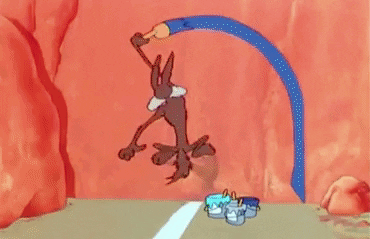
This all ended in 1962 when he moonlighted to work on UPA’s Gay Purr-ee; although Warner Bros ended up distributing the film, when they found he’d broke his exclusivity contract with Warner Bros Cartoons, they promptly fired him.
Jones didn’t really stumble from this, and took most of his animation unit with him to competitor MGM Animation, working on Tom and Jerry shorts - a pair of characters created by William Hanna and Joseph Barbera in 1940, who would later become famous for their own animation studio. By this point the Civil Rights Movement was well underway, so one of his jobs was to edit out the racism from old Tom and Jerry cartoons to make them airable on TV by replacing the mammy stereotype with an Irish maid instead. He also returned to working with Geisel, adapting the books How the Grinch Stole Christmas (1966) and Horton Hears a Who (1970) into TV specials.
Jones’s main project in this period was directing feature film The Phantom Tollbooth (1970)… which promptly flopped. MGM closed their animation studio in 1970, and Jones started an animation studio of his own, primarily adapting childrens’ books like the work of Kipling; this was pretty unsuccessful and he finally returned to Warner Bros in 1976, notably editing many of his old shorts into their first theatrical release, The Bugs Bunny/Road Runner Movie (1979).
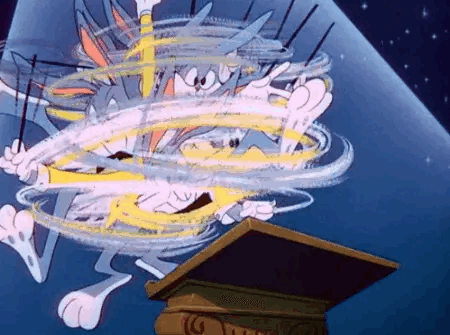
So, that’s a big long list of names and dates and films, what can we say about animation based on all this? It’s tempting to contrast with how the industry evolved with in Japan: the classic contrasts of realism vs chaotic expressive animation; characters owned by a studio vs animation primarily as a means to adapt manga; the way different character designs facilitate different approaches to animation, or the similarities and differences in how limited animation and smears are used in the different traditions.
We could also ask about how Jones’s material interests changed going from a union man to a studio owner - did he follow a similar trajectory to Hayao Miyazaki and Isao Takahata? Or we might ask what sort of worldview Jones expresses in his less overtly party-political works; we could look at the power dynamics of studios and like, who gets to become an auteur and…
…that’s… a lot more than I have time to do right now, especially since it’s almost 10pm in the UK ><
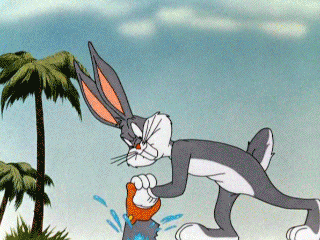
Tonight I’m going to be making use of the Looney Tunes movies, which are generally speaking compilations or re-edits of previous Looney Tunes shorts with some additional animation to act as a framing narrative. These will cover the majority of the ‘hits’, and I can fill in the rest on Youtube. The particular movies we’ll be using are The Bugs Bunny/Roadrunner Movie (1979) produced by Jones, which comprises 12 Bugs cartoons (in some cases slightly shortened) and a long chase sequence edited together from various Road Runners. We’ll follow this with The Looney Tunes Hall of Fame (1991), which straightforwardly presents some of their best regarded shorts. a selection of other Looney Tunes shorts drawn from the “Platinum Collection” since I don’t seem to be able to get the Hall of Fame. Guh.
If that sounds fun, please head over to twitch.tv/canmom, where silly rabbit cartoons will be onscreen shortly!
Comments